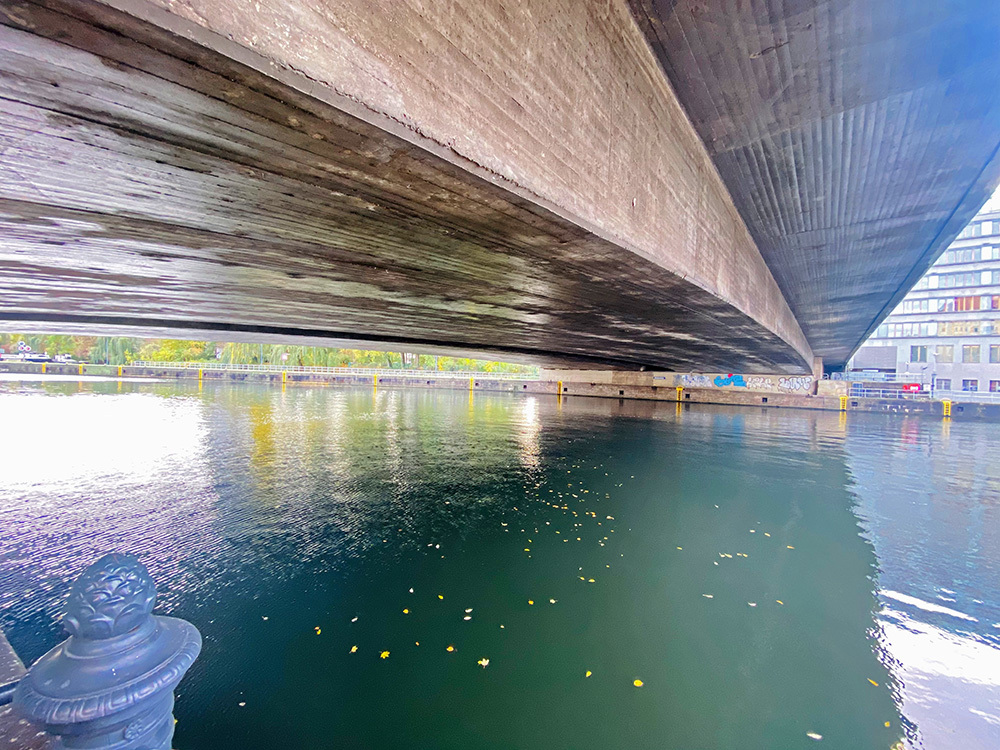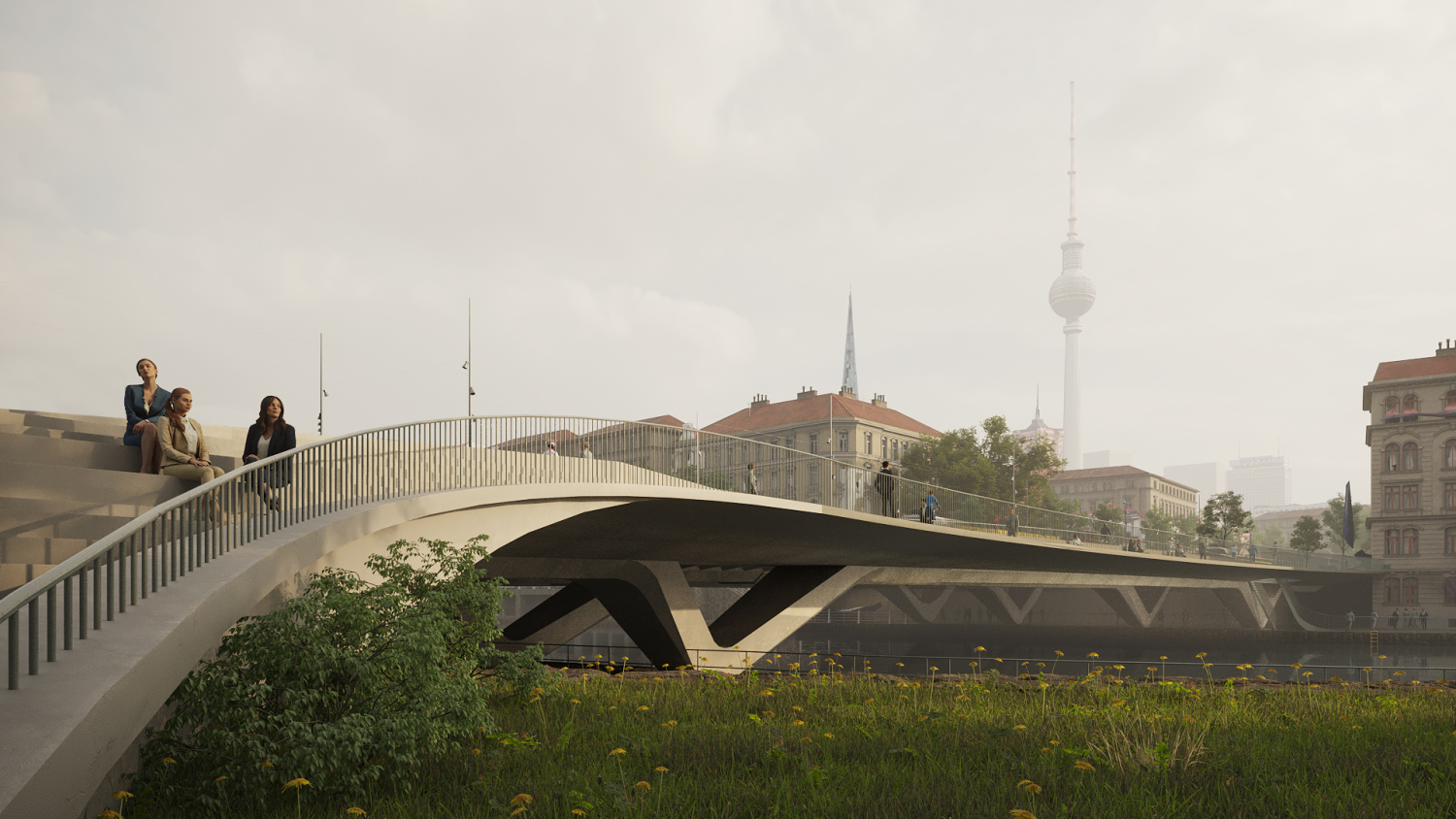Thessaloniki gets ready for its metro launch in November
The underground rapid transit lines have been under construction for almost two decades due to various project delays
 TheMayor.EU logo
TheMayor.EU logo The winning design will allow for flexibility and vehicle reduction
The City of Berlin announced the winning design for the redevelopment of Mühlendamm bridge on 28 July. The local engineering office Arup Deutschland GmbH and the architects from COBE A / S from Copenhagen submitted the winning design and according to the ten-person jury, it is the best because it offers a lot of flexibility for the coming green energy transition in Germany.
Currently, the Mühlendamm bridge in Mitte has around 72,000 vehicles and over 2,500 trucks passing through it every day. As such, it is one of the most important arteries through the heart of Berlin. However, the bridge was constructed in the 1960s and a number of loadbearing and structural defects have developed over the years, making swift reconstruction necessary.
The competition participants, in turn, had to meet complex requirements in terms of design, functionality, sustainability, construction, economic efficiency and the urban-architectural integration into the existing heterogeneous environment of the historic centre.
For starters, the Mühlendamm cannot be completely closed for the duration of the construction. Instead, first, half of the bridge will be closed off and rebuilt according to the new design, then the other half will undergo the same process.
 A view of the underbelly of the bridge, Source: City of Berlin
A view of the underbelly of the bridge, Source: City of Berlin
Furthermore, there is a turning point for freight and passenger traffic in the Spee river right underneath the bridge that has to remain open. This makes the construction of loadbearing columns in the river impossible.
The new structure will span the Spree with a slight concave curve on both sides, connecting the banks and integrating the adjacent urban space. Additionally, instead of the six car lanes on the old bridge, the new one will have only four, with two of them being transformed into tramlines, that will connect Potsdamer Platz and Hallesches Tor.
 The new bridge will connect the adjacent urban spaces,
The new bridge will connect the adjacent urban spaces,
Source: Arup / COBE, City of Berlin
Lane reduction is part of the future vision for Berlin that city planners are trying to account for in this design, as over the coming years Germany has to reduce CO2 emissions and cars. One of the best ways to reduce traffic is to cut down on vehicle capacity.
Ephraim Gothe, District Councillor for Urban Development in Mitte and member of the jury expressed his desire for a very quick downgrade to the bridge’s car lanes after its construction. The vehicle lanes can be reduced to just one per direction - in favour of more bicycle and pedestrian traffic.
Regine Günther, Senator for Environment, Transport and Climate Protection was quoted in a press release, saying: “The future Mühlendamm Bridge will be a bridge for the Berlin mobility transition, with plenty of space for the city-friendly modes of transport tram, bicycle and pedestrian traffic. "
If you want to keep up with how European cities and regions are changing, follow us on Facebook, Twitter and Instagram.

The underground rapid transit lines have been under construction for almost two decades due to various project delays

Now you can get your wine in Talence by paying directly in Bitcoin

That’s because the state has to spend money on updating the railway infrastructure rather than subsidizing the cost of the popular pass

Rethinking renewable energy sources for the urban landscape

The examples, compiled by Beyond Fossil Fuels, can inform and inspire communities and entrepreneurs that still feel trepidation at the prospect of energy transition

Now you can get your wine in Talence by paying directly in Bitcoin

The 10th European Conference on Sustainable Cities and Towns (ESCT) sets the stage for stronger cooperation between the EU, national and local level to fast track Europe's transition to climate neutrality.

At least, that’s the promise made by the mayor of Paris, Anne Hidalgo

The underground rapid transit lines have been under construction for almost two decades due to various project delays

At least, that’s the promise made by the mayor of Paris, Anne Hidalgo

Hostal de Pinós is located in the geographical centre of the autonomous region

Despite its church-y name, the district has long been known as the hangout spot for the artsy crowds

Urban dwellers across the EU are having a say in making their surroundings friendlier to people and the environment.

Forests in the EU can help green the European construction industry and bolster a continent-wide push for architectural improvements.

Apply by 10 November and do your part for the transformation of European public spaces

An interview with the Mayor of a Polish city that seeks to reinvent itself

An interview with the newly elected ICLEI President and Mayor of Malmö

A conversation with the Mayor of Lisbon about the spirit and dimensions of innovation present in the Portuguese capital














